Whether you know them as froghoppers, cuckoo spitters, or plain-jane sap-suckers, the spittlebug can be a frustrating pest in any property. These bugs are some of the most common lawn pests in the continental United States, with several species affecting grasses, ornamental trees, and herbaceous plants around residential yards.
Thankfully, the process required to control spittlebugs is extremely straightforward.
Here’s how to get rid of spittlebugs around your lawn and garden plants and easy tips for spreading their spread during the early spring and late summer.
What Are Spittlebugs?
Spittlebugs are a type of turf insect that suck plant juices from leafy, herbaceous plants. Adult spittlebugs lay eggs in dense groves and shady places, giving rise to hungry nymphs that hatch in two weeks or less. Some of the spittlebug’s favorite host plants include seasonal weeds, ornamental grasses, and goldenrod, although they’re also known to target woody plants like trees.
There are four different kinds of spittlebugs common to the United States:
- Meadow spittlebug
- Diamondback spittlebugs
- Dogwood spittlebugs
- Two lined spittlebugs
Both the nymphs and adults of these spittlebug species consume plant juices throughout their 50-day lifecycle. Left to their own devices, they can cause an enormous amount of damage to the lawn and garden — draining hundreds of liters of plant sap every single year.
What Do Spittlebugs Look Like (Identification)
There’s a good reason spittlebugs are called froghoppers by locals. These tiny-inch pests sport wide backs, elongated bodies, and enlarged hind legs, looking all the world like little frogs. This is especially true of nymphs, as they lack the larger wings or darker color patterns of adults. Plus, they can jump — up to two feet in the air!
The most identifiable feature of the spittlebug is, of course, its spittle. This foamy substance is secreted during the pest’s feeding process and will protect them from competing insects like beetles, fire ants, or other predators. This spittle also works to mitigate the harsh rays of the sun, as the spittlebug’s feeding process is quite sedentary in nature.
Keep in mind that spittlebugs are extremely small — less than 1/2 an inch on average. If you’re serious about identifying their presence in your yard, you’ll want to start with their damages before their physical identification.
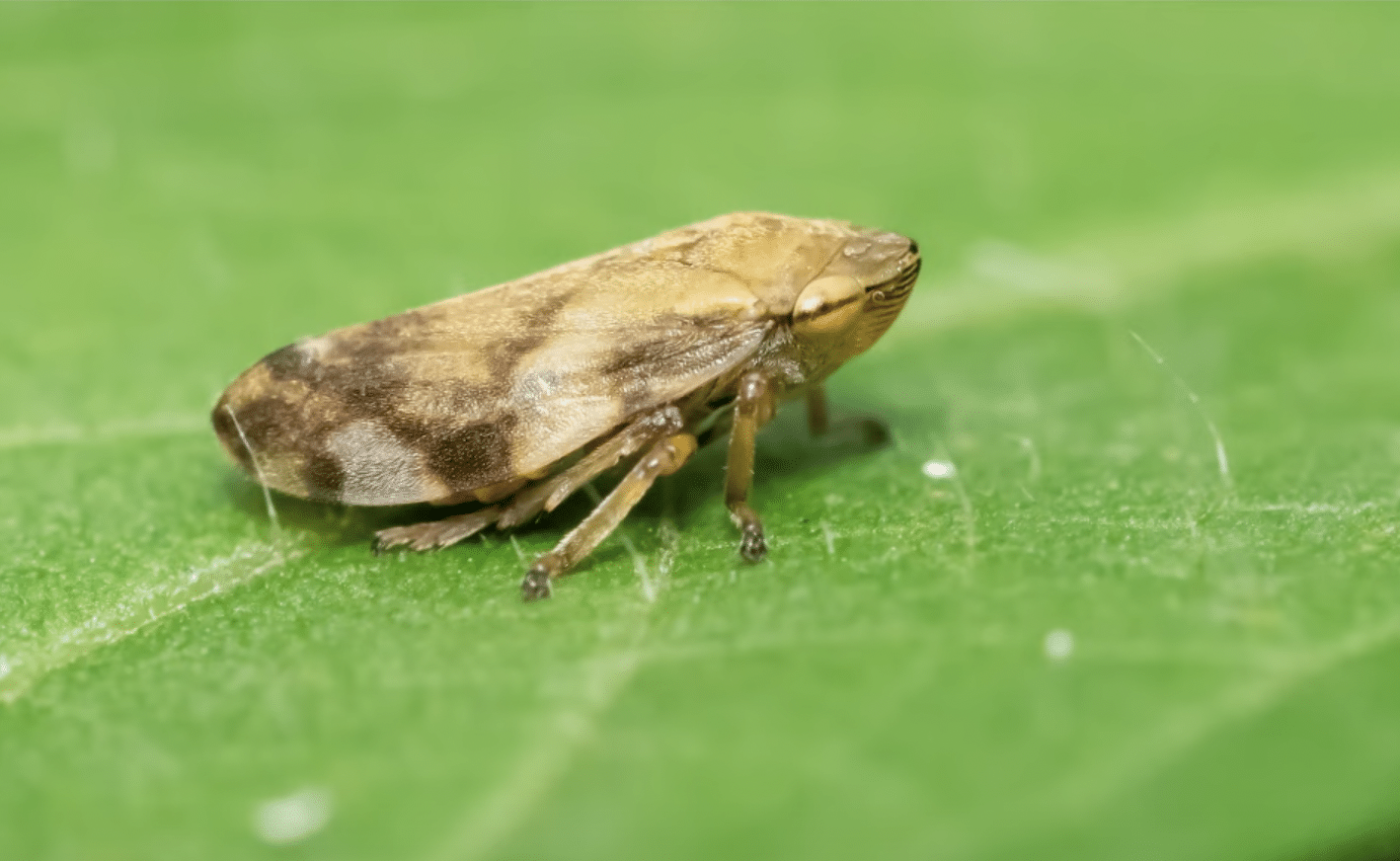
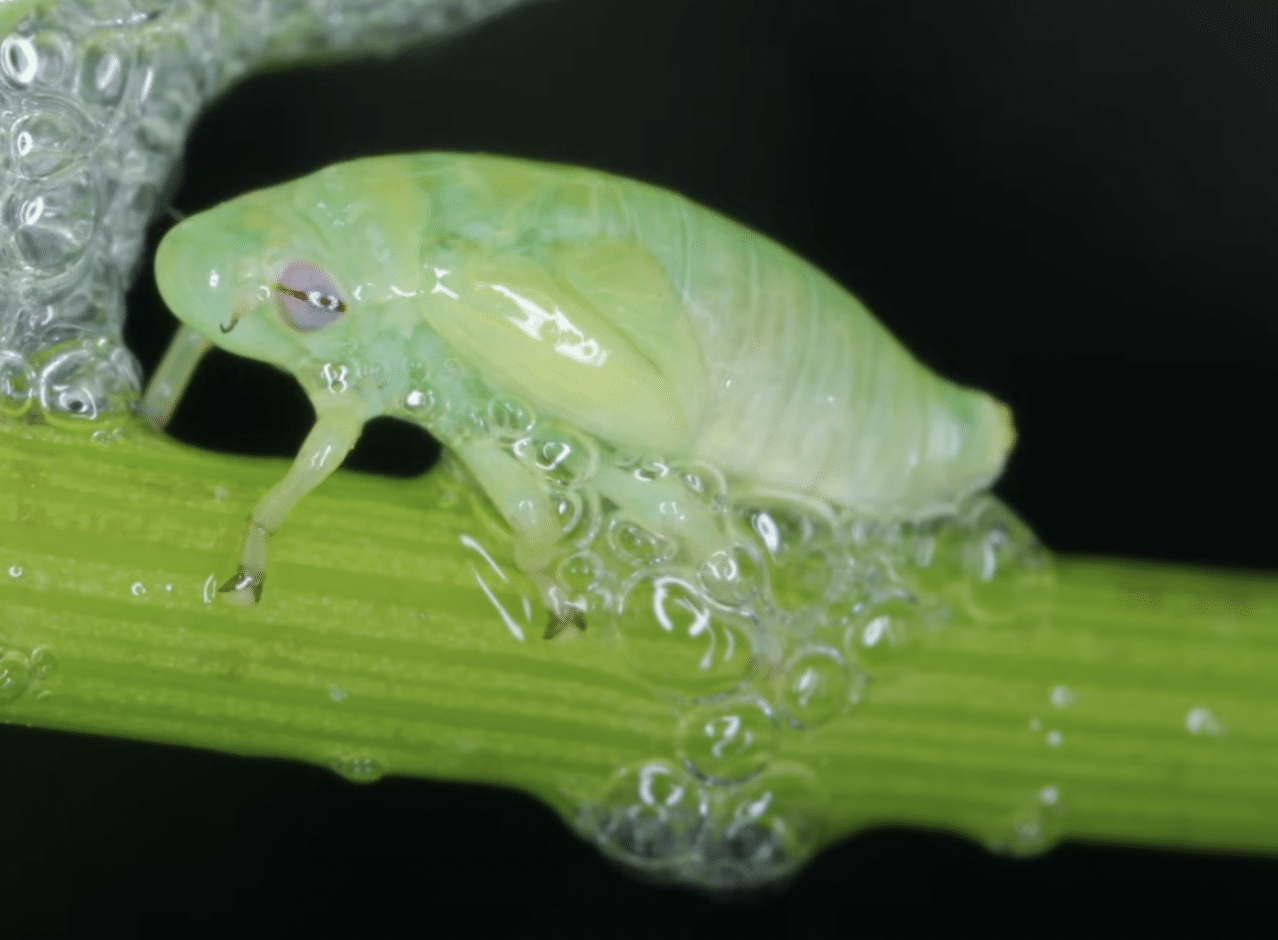
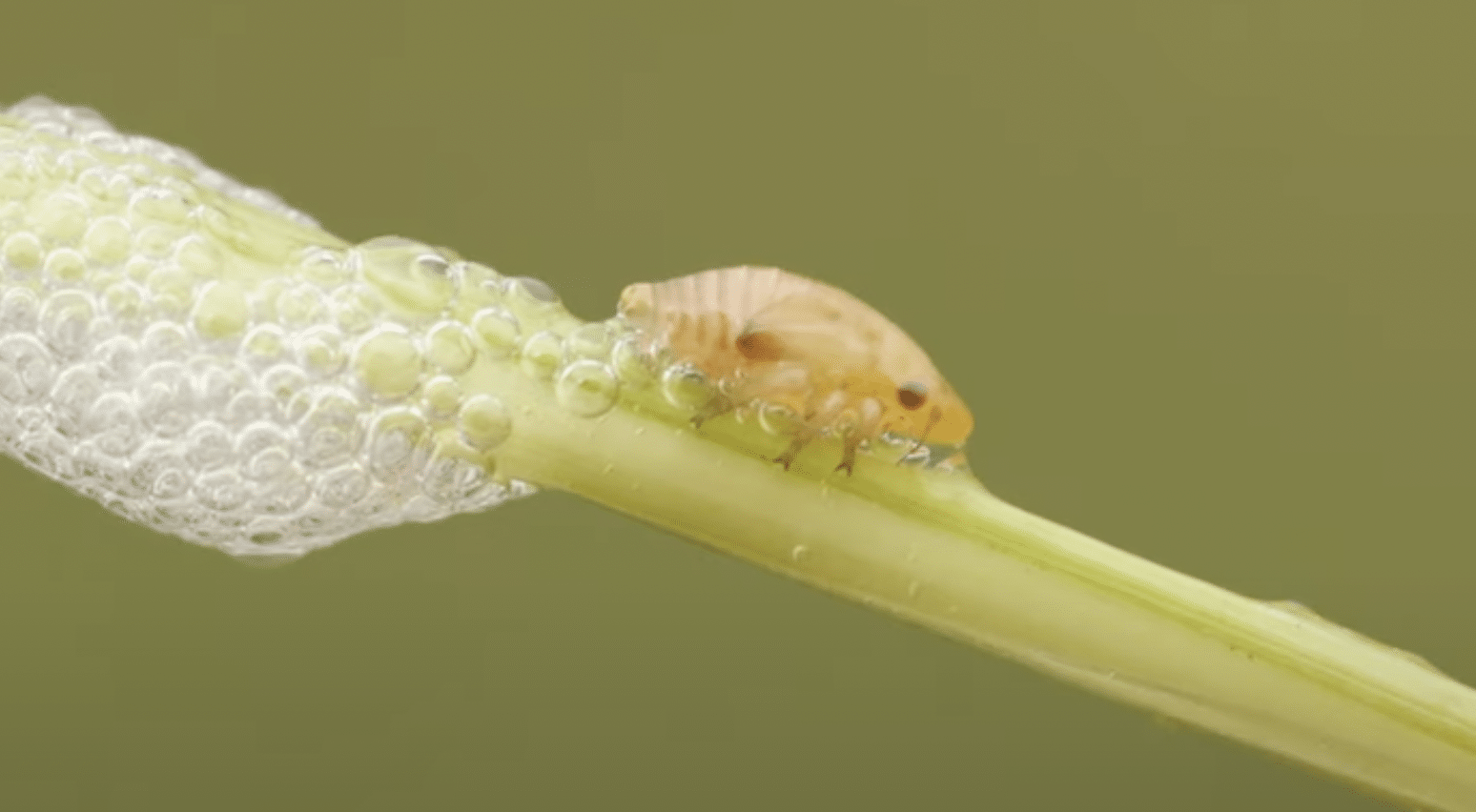
Identifying Spittlebug Lawn Damage
The average spittlebug infestation is extremely difficult to identify. Your best bet for an early catch is watching for the damage they leave behind, particularly in the garden, on plant stems, and around seasonal grasses.
Look for:
- Spittlebug foam, a frothy substance that appears underneath leaves and blades of grass
- Plant damage, especially berries, roses, and other ornamental garden favorites
- Yellow or brown patches that seem to spread from your grassroots to the tip of each blade
If you catch sight of tiny, hopping insects while assessing brown patches around your yard, you more than likely have an infestation on your hands.
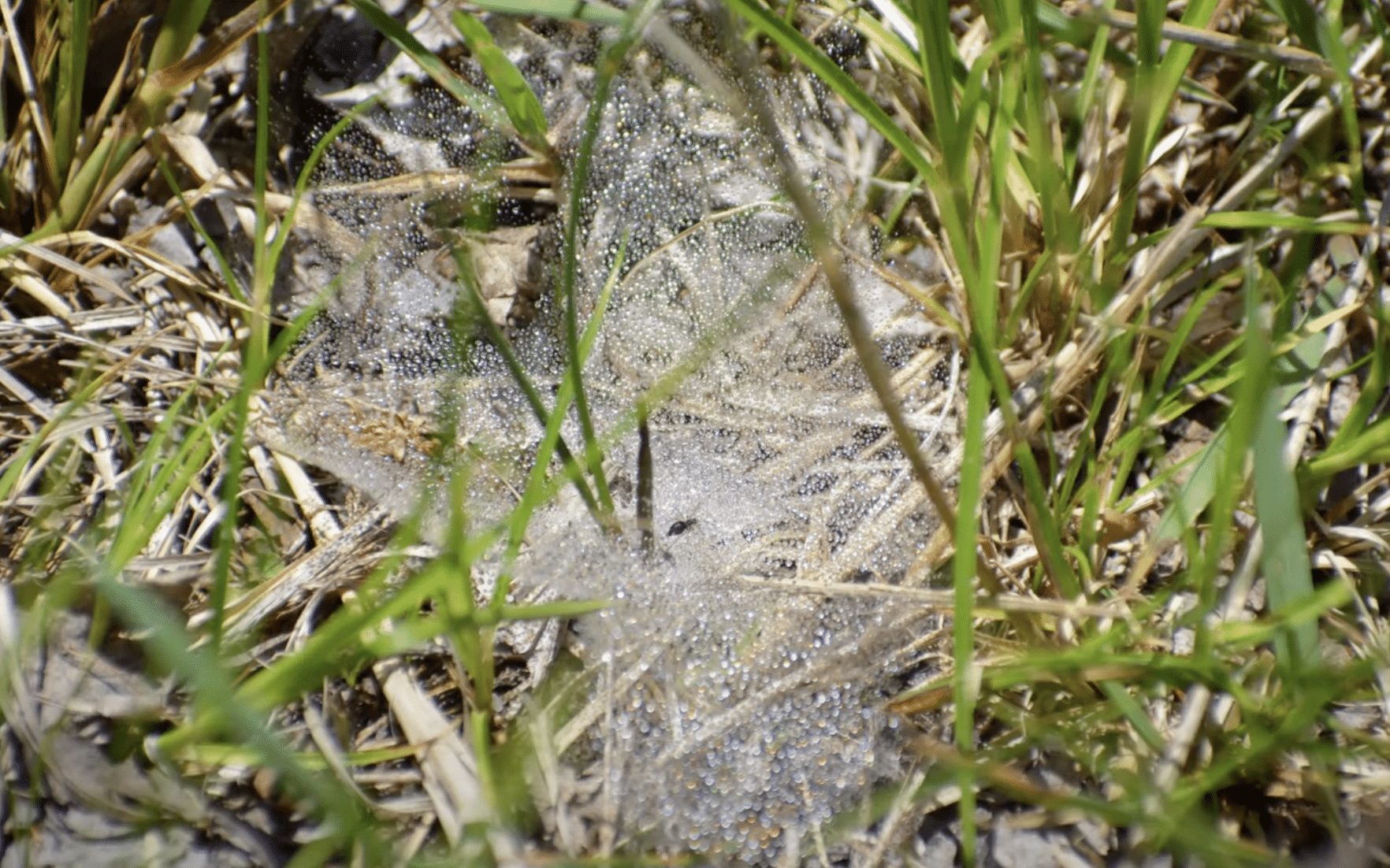
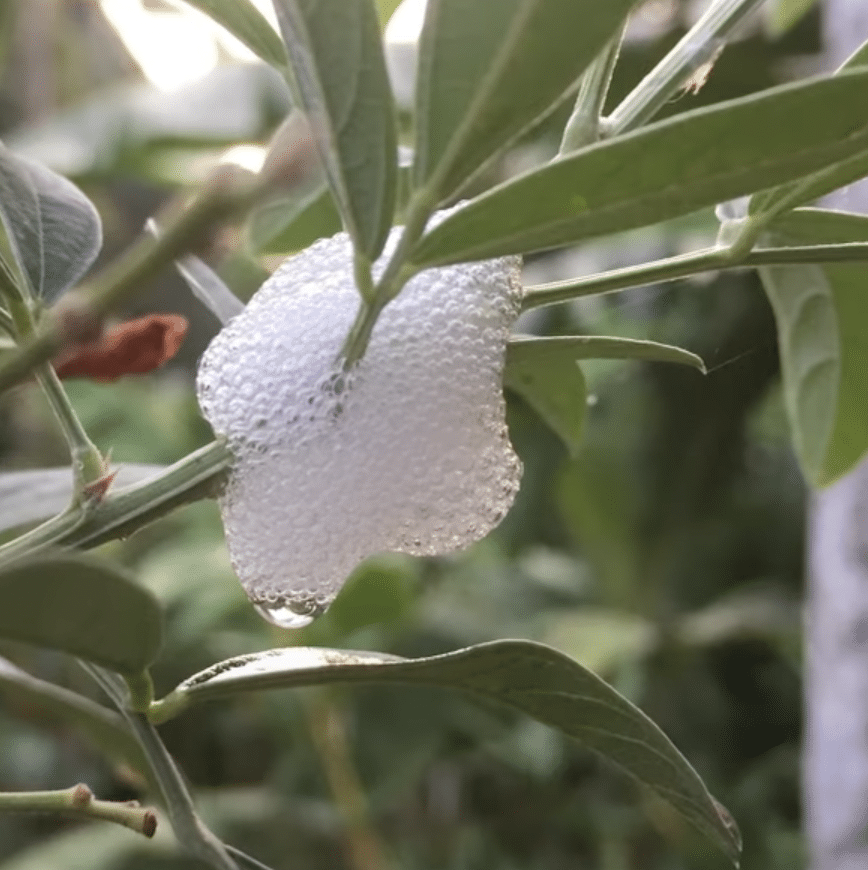
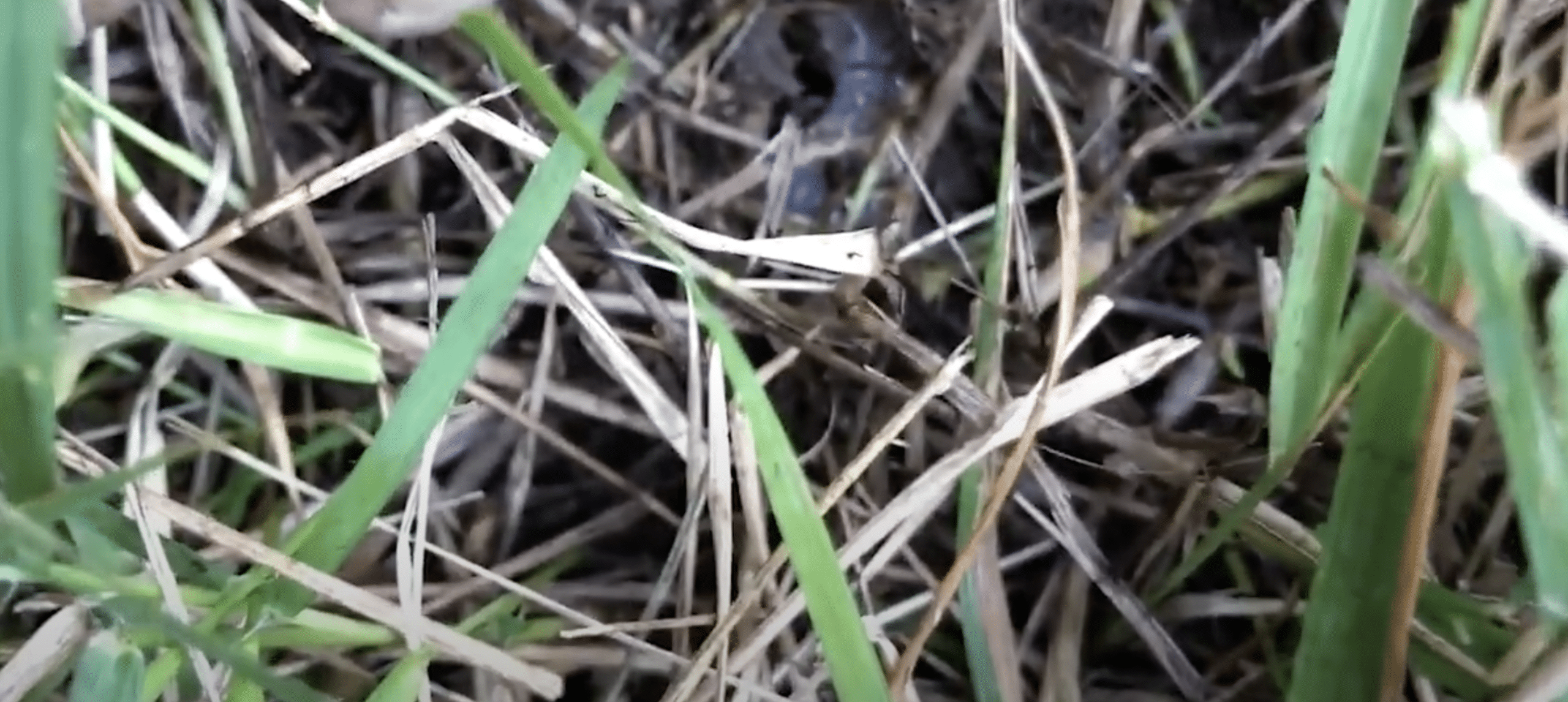
Spittlebug Lawn Treatments
It’s much easier to remove spittlebugs than you’d think — with the right approach, that is.
You have two major options for spittlebug control: granules or sprays.
Warm-season grasses (bermudagrass, centipedegrass, zoysiagrass, etc.) are the most affected by spittlebug activity. They’re also perfect candidates for spray solutions like:
Cool season grasses (Kentucky bluegrass, fescue, perennial ryegrass, etc.) are the frequent targets of two-lined spittlebugs. However, attacks are much fewer and further between, allowing you to take a more passive approach to their control. You may want to rely on granules such as:
Be sure to wear eye protection and read all application instructions before utilizing these pesticides. The product labels should offer plenty of information regarding safe amounts, concentration levels, and dispersion methods.
How To Prevent Spittlebug Damage?
The best way to stop spittlebugs from damaging your grass is to prevent larger infestations from settling down in the first place.
Yard prevention is a great place to start:
- Clean up any garden debris regularly, focusing on leaf litter, overgrown weeds, or tall grass around the perimeter of the property. The removal of plant debris will eradicate spittlebug hiding places while stopping other insects from filling in the gaps.
- Spray your grass with diluted neem oil at least once per week. Regular treatments will ensure that spittlebugs do minimal damage (if any) to your grass.
- Keep your garden plants healthy and vibrant. Apply plenty of water, fertilizer, and organic material to keep spittlebugs from taking advantage of struggling plants.
A healthy yard is a spittlebug-free yard. Do whatever you can to care for the growth of your grass, and odds are your lawn will stay happy, healthy, and bug-free for years to come.
Spittlebugs FAQs
It’s hard to know how to get rid of spittlebugs on your own, especially if you don’t have much experience managing them on your own. To combat this, check out these frequently asked questions about spittlebug control, pesticides, and more.
What will kill spittlebugs?
Spittlebug nymphs respond well to Talstar P Professional Insecticide, while adults can be controlled with products like DeltaGard G Granules. For a more DIY approach, use a garden hose to spray down plants once per day. This will wash off the remaining larvae and drown eggs before they hatch.
Do spittlebugs damage grass?
Both cool and warm season grasses can be damaged when spittlebug nymphs pierce the blades with their mouthparts. Your grass will be put under intense stress as tiny insects suck the plant juices, leading to discolored grass or even bald spots.
Do spittlebugs harm plants?
Apart from grasses, spittlebugs have been known to damage or even kill ornamental plants, rose bushes, and fruit-bearing plants like strawberries — so it’s so important to start treatment immediately.
Does soapy water kill spittlebugs?
Yes! Drop spittlebug adults and larvae into jars of soapy water to kill them instantly. Insecticidal liquid soap is always a good option for eco-conscious homeowners.
Is spittlebug foam harmful?
The white foam produced by spittlebugs is not harmful to humans. However, some species are known to carry Xylella bacteria, which infect and destroy thousands of plants every year.
